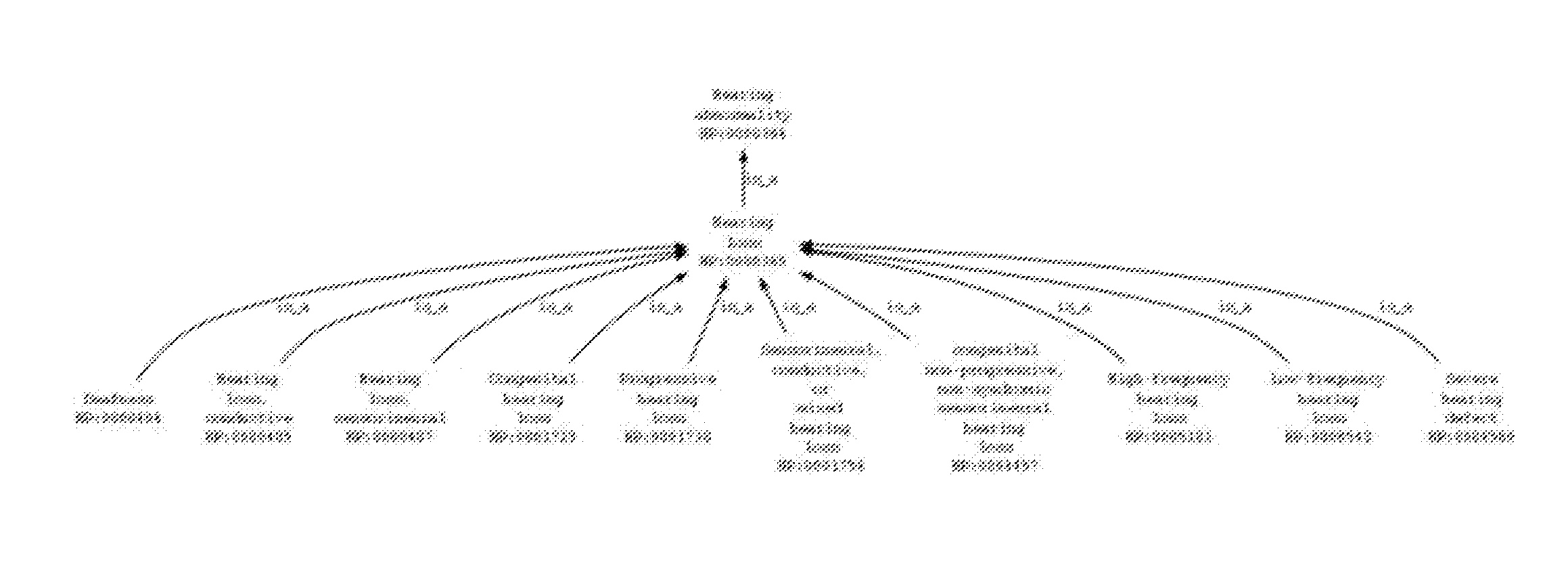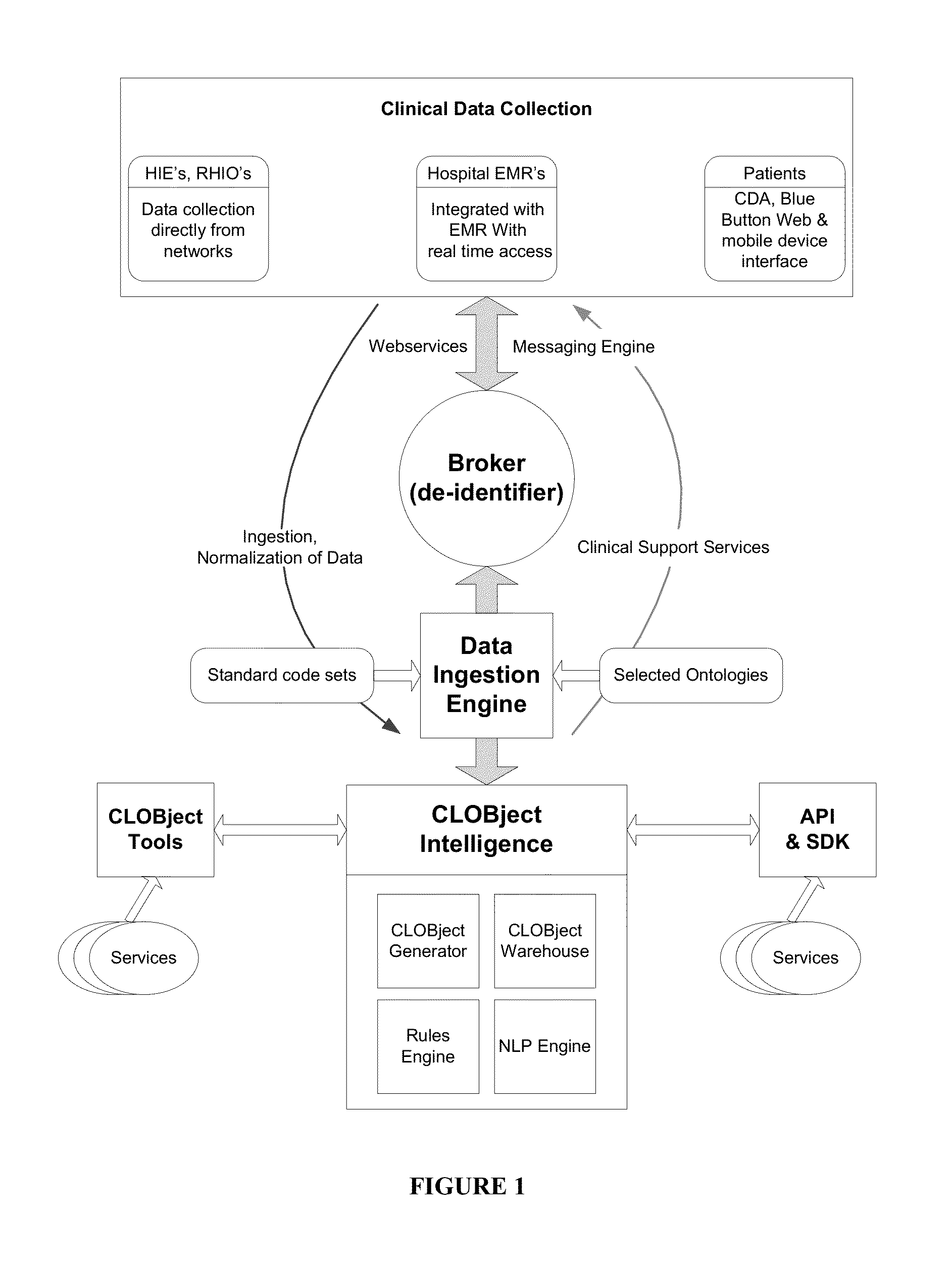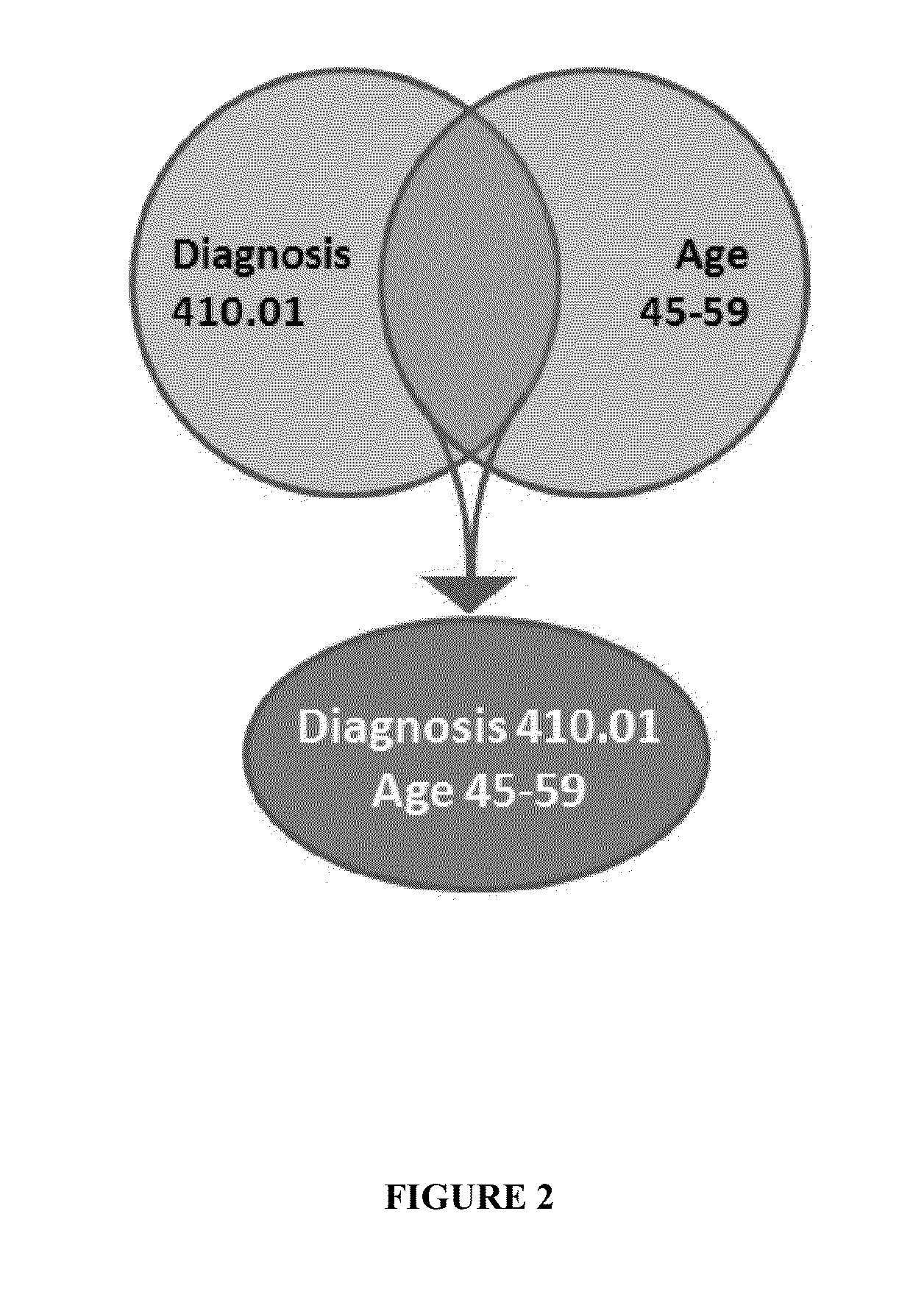System and Methods for Personalized Clinical Decision Support Tools
a clinical decision support and tool technology, applied in the field of personalized clinical decision support tools, can solve the problems of inaccessibility, unrealized potential of digital healthcare data, and inaccessibility of digital healthcare data, and achieve the effect of preventing researchers from making discoveries
- Summary
- Abstract
- Description
- Claims
- Application Information
AI Technical Summary
Benefits of technology
Problems solved by technology
Method used
Image
Examples
example 1
Data Flow Schematic
[0148]FIG. 1 shows that metadata collection occurs at various levels, directly from healthcare networks, hospitals, or patients themselves. Using a web-based broker, the data is de-identified to comply with patient privacy and HIPAA standards. The data is then ingested, which comprises of streamlining data to facilitate mapping of data to normalized data definitions in later processing at the Object Intelligence stage. Additionally, existing ontologies within the software are applied to the newly inputted data to create Objects at the Object Intelligence stage.
[0149]As depicted in FIG. 1, The Object Intelligence stage consists of the Object Generator, Object Warehouse, Rules manager, and the Natural Language Processing (NLP) engine. These components allow for the generation, storage, analysis, maintenance, and distribution of the Objects. At this point, the software provides a modern Application Programming Interface (API) for developers and researchers to view co...
example 2
Computer Architectures
[0152]Various computer architectures are suitable for use with the invention. FIG. 3 is a block diagram illustrating a first example architecture of a computer system 300 that can be used in connection with example embodiments of the present invention. As depicted in FIG. 3, the example computer system can include a processor 302 for processing instructions. Non-limiting examples of processors include: Intel Core i7™ processor, Intel Core i5™ processor, Intel Core i3™ processor, Intel Xeon™ processor, AMD Opteron™ processor, Samsung 32-bit RISC ARM 1176JZ(F)-S v1.0™ processor, ARM Cortex-A8 Samsung S5PC100™ processor, ARM Cortex-A8 Apple A4™ processor, Marvell PXA 930™ processor, or a functionally-equivalent processor. Multiple threads of execution can be used for parallel processing. In some embodiments, multiple processors or processors with multiple cores can be used, whether in a single computer system, in a cluster, or distributed across systems over a net...
example 3
Mapping of Morbid Obesity Using Human Disease (DOID) Ontology
[0163]A user opts to use the DOID ontology to search for morbid obesity. The user searches and is provided with a list of synonyms as displayed in TABLE 4. Terms are retrieved by comparing the searched term to an ontology mapping module of the platform, which identifies synonyms in multiple ontological hierarchies. In this case, the synonyms are morbid obesity, morbid obesity (disorder), and severe obesity. Additionally, the search displays other ontological databases used for cross-referencing of the term, as shown in TABLE 4. Finally, the DOID displays the hierarchy of the term which shows not only the specified term, but also the parents, as illustrated in FIG. 15. In this instance, the least specialized term is “disease of metabolism”, which ultimately leads the ontological tree to “morbid obesity”, the most specialized term. The hierarchy reveals that morbid obesity is a type of obesity, which falls under the category...
PUM
 Login to View More
Login to View More Abstract
Description
Claims
Application Information
 Login to View More
Login to View More - R&D
- Intellectual Property
- Life Sciences
- Materials
- Tech Scout
- Unparalleled Data Quality
- Higher Quality Content
- 60% Fewer Hallucinations
Browse by: Latest US Patents, China's latest patents, Technical Efficacy Thesaurus, Application Domain, Technology Topic, Popular Technical Reports.
© 2025 PatSnap. All rights reserved.Legal|Privacy policy|Modern Slavery Act Transparency Statement|Sitemap|About US| Contact US: help@patsnap.com



